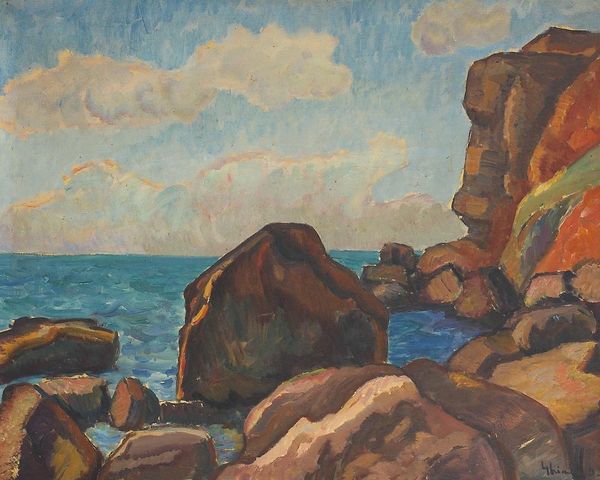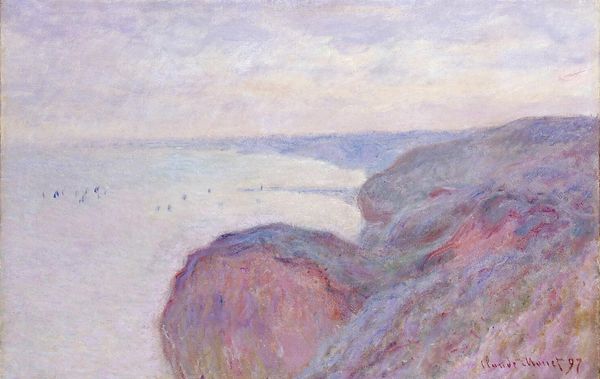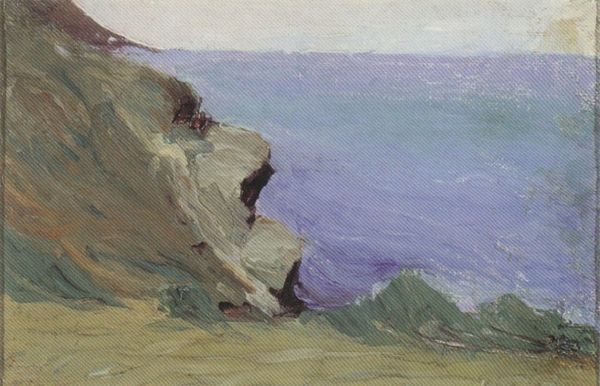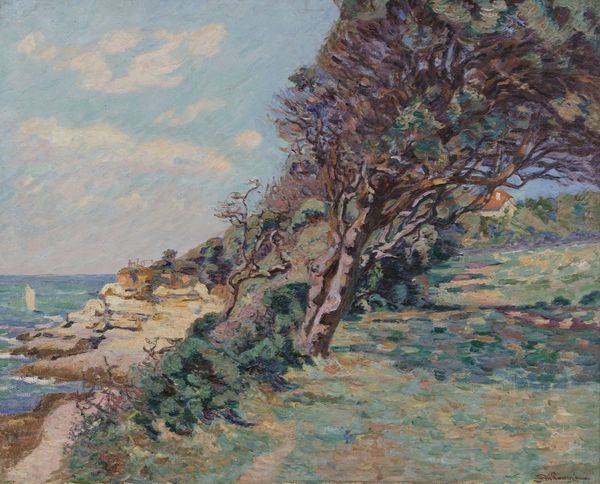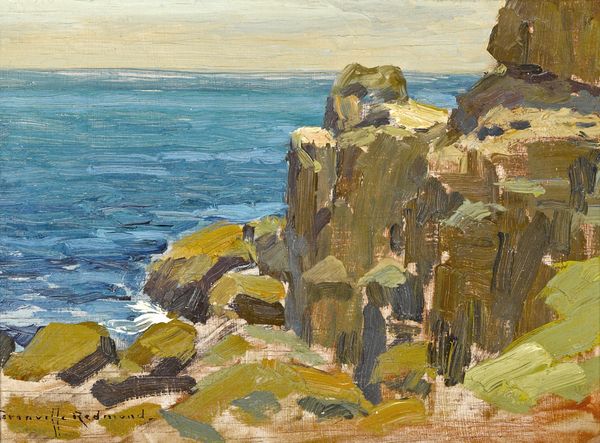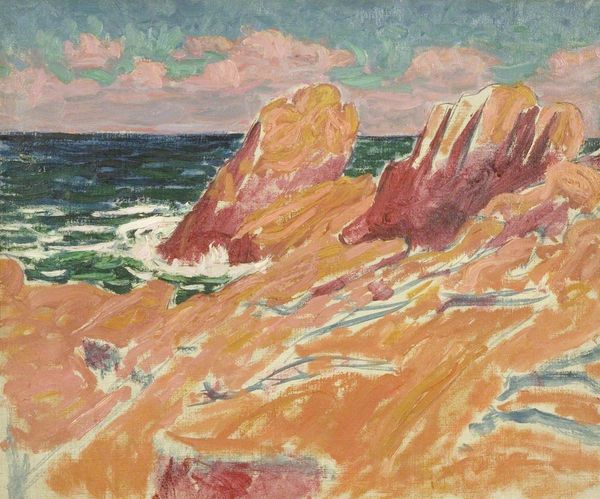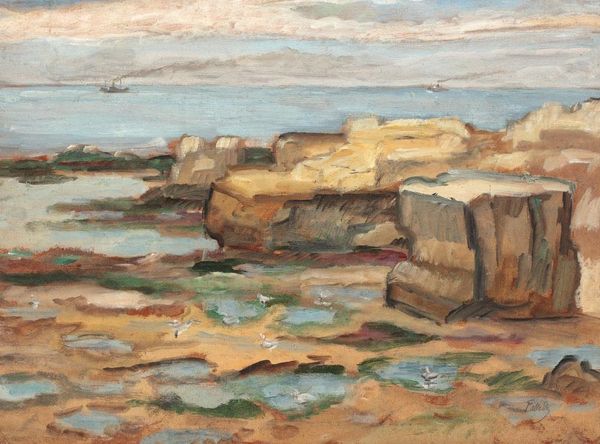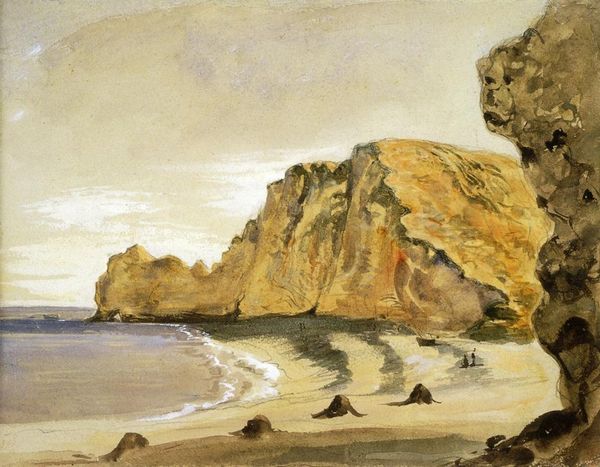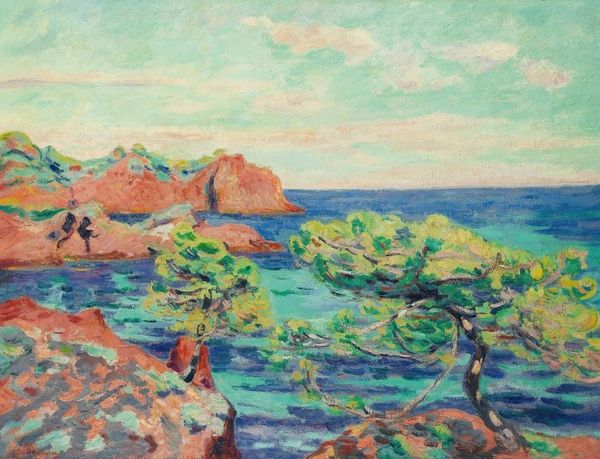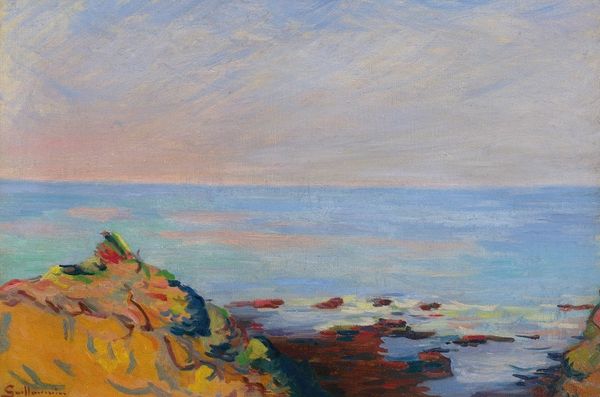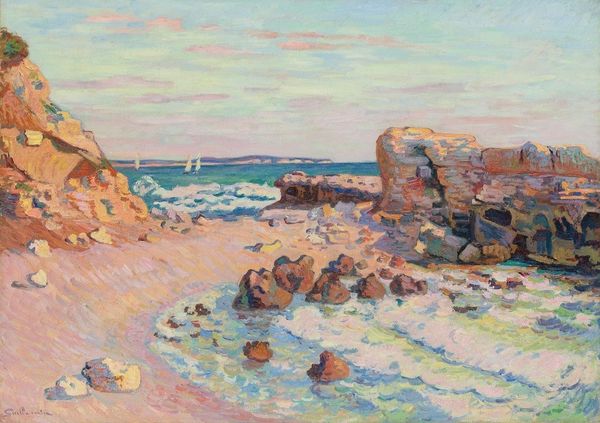
Copyright: Public domain
Curator: So, here we have Vasile Popescu's "Balchik Cliffs," an oil-on-canvas landscape created around 1920. Editor: Immediately, I'm struck by the textures! It's so tactile, almost feels like I could reach out and grab a handful of that rugged cliff face. The palette is wonderful too - warm earth tones meet the cool blues of the sky and sea. Curator: The impasto technique really does add to the drama and the romantic feel, doesn't it? You can almost feel the wind and sun beating down on this coastal scene. Balchik, now in Bulgaria, was part of Romania at the time, and a popular artist colony. This work provides insight into how national identity intersected with artistic movements. Editor: Absolutely, there's a strong sense of place. It's more than just a pretty picture, it whispers stories of artistic gatherings and a specific moment in the history. I am thinking of plein air. Curator: This canvas is indeed very much influenced by realism and plein-air. How the interplay between national artistic identity developed during this era with social factors, class and gender inequalities requires further understanding. Editor: I think that’s what makes the painting compelling! It captures the feeling of the cliffs in Balchik but transcends that, hinting at a larger socio-political setting and an immersive personal connection to that land. Curator: Yes, "Balchik Cliffs" certainly provides insights into social factors in relation to artistic identity development, emphasizing both the power and role that place can have on artists and artistic movements in Romania at the time. Editor: Indeed. It all boils down to an emotionally evocative painting! Curator: A beautiful piece to reflect on Romania's intersectional past!
Comments
No comments
Be the first to comment and join the conversation on the ultimate creative platform.
